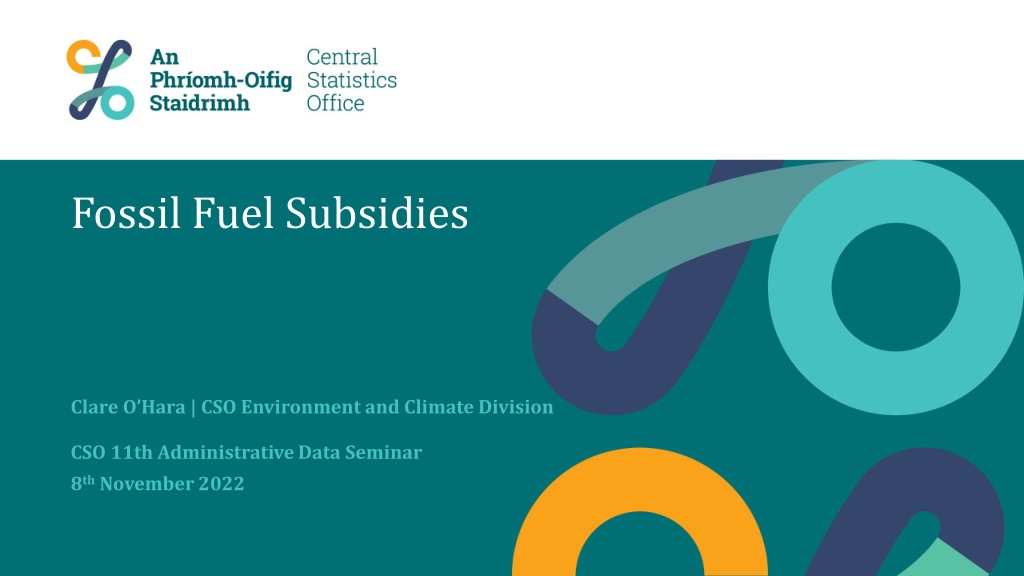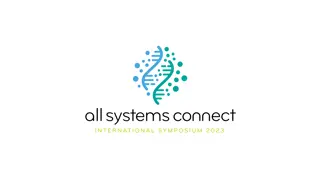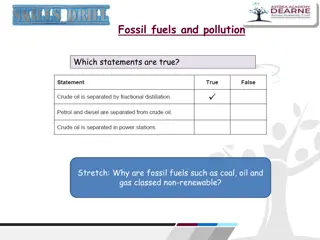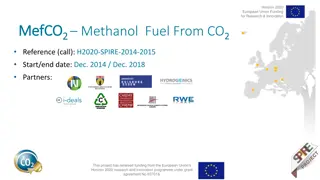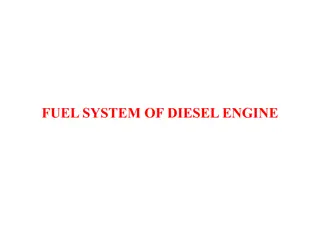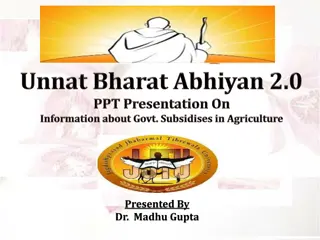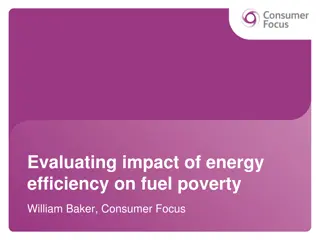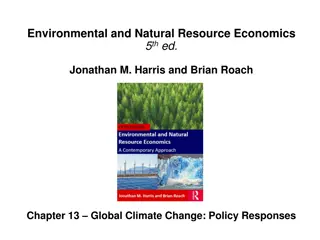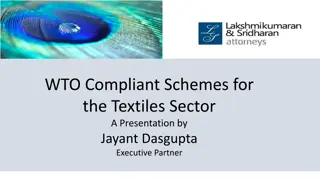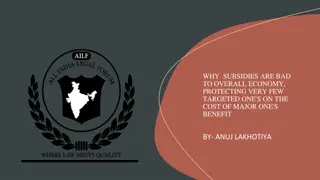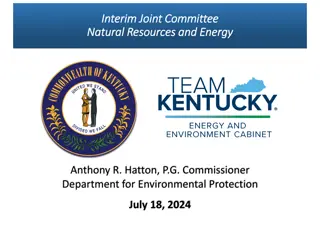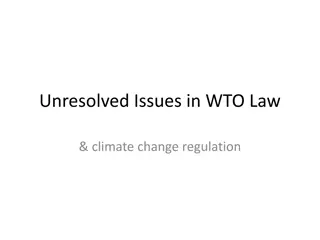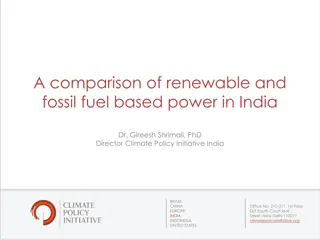Understanding Fossil Fuel Subsidies and Effective Carbon Rates
Explore the background, scope, and data sources related to fossil fuel subsidies and Effective Carbon Rates (ECRs). Learn how organizations like Eurostat, OECD, IMF, and IEA collect data and classify subsidies. Discover the indicators, classifications, and coverage of fossil fuel subsidies, ECRs, and energy taxes. Stay informed about upcoming data releases and policy implications in this crucial area of environmental economics.
Download Presentation

Please find below an Image/Link to download the presentation.
The content on the website is provided AS IS for your information and personal use only. It may not be sold, licensed, or shared on other websites without obtaining consent from the author. Download presentation by click this link. If you encounter any issues during the download, it is possible that the publisher has removed the file from their server.
E N D
Presentation Transcript
Fossil Fuel Subsidies Clare O Hara | CSO Environment and Climate Division CSO 11th Administrative Data Seminar 8thNovember 2022
Outline 1. Background 2. Scope 3. Data Sources 4. Results 2
Background Eurostat has developed a series of statistical modules based on the UN System of Environmental- Economic Accounting (SEEA) coherent with each other and with national accounts principles and classifications e.g. Environmental Subsidies and Similar Transfers, Environment Taxes, Air Emissions Accounts However, the SEEA does not include a definition of potentially environmentally damaging subsidies Despite this, there are many demands for data on these subsidies: SDG indicator 12.c.1 Amount of fossil fuel subsidies per unit of GDP Green and brown budgeting review Department of Finance European Green Deal ( fossil-fuel subsidies should end ; Commission will look closely at the current tax exemptions including for aviation and maritime fuels ) 3
Background OECD, IMF and IEA all produce estimates of fossil fuel subsidies using different approaches The OECD also publishes data on a related measure: Effective Carbon Rates (ECRs) Eurostat will carry out a pilot data collection on potentially environmentally damaging subsidies and ECRs in early 2023 CSO Environment and Climate Division worked to develop a annual national statistical release which would complement our other releases that are based on Eurostat SEEA modules; and provide data for policy needs 4
Scope Indicators Total Fossil Fuel Subsidies (based on inventory of individual measures) Average Effective Carbon Rates (ECRs) Energy Tax per Litre of Fuel Coverage ESA 2010 current and capital transfers; tax expenditures; price supports; etc (broad definition) All fossil fuels (including peat) and electricity generated from fossil fuels ECRs are based on all energy taxes included in the Eurostat Environment Taxes module Annual data for 2000-2020 (2021 release due in March 2023) Energy tax per litre on selected fuels in 2020 5
Scope Classifications ECRs classified according to sector (e.g. Road Transport, Aviation, Industry) and fuel Plan to introduce NACE classification Fossil fuel subsidies classified as production or consumption, and direct (budgetary) or indirect (tax expenditures) Energy tax per litre classified according to fuel and type of tax 6
Why three different indicators? Fossil Fuel Subsidies (inventory approach) Effective Carbon Rates Energy Tax per Litre policy makers can evaluate and track individual supports compare taxes paid by different sectors should complement knowledge of general public (e.g. price per litre at petrol pump) show contribution of direct subsidies v tax expenditures provide data on specific fuels provide data on specific fuels can be used to estimate overall national support to fossil fuels useful for cross-country comparisons provide data on specific taxes compare with other environmental accounts 7
Data Fossil Fuel Subsidies Data on budgetary transfers usually available from accounts/reports of govt departments and public bodies (e.g. appropriation accounts, CRU PSO Levy decision papers) or contact relevant govt dept/public body to request data Data on tax expenditures some tax expenditure data is published by Revenue, e.g. Diesel Rebate Scheme other estimates involve defining the relevant benchmark tax rates and measuring tax expenditures as deviations from these rates using the revenue foregone approach => need data on fuel volumes 8
Data Fossil Fuel Subsidies Type of Tax Specific Tax from Irish Regime Unit Benchmark Rate 2020 Excise Duty/Carbon Tax on Hydrocarbon Oils for Transport Mineral Oil Tax on Petrol (Excise and Carbon Tax) per 1,000 litres 601.69 Excise Duty/Carbon Tax on Hydrocarbon Oils for Heating Mineral Oil Tax on Marked Gas Oil (Excise and Carbon Tax) per 1,000 litres 117.78 Excise Duty on Electricity Electricity Tax: Non-Business Use per MWh 1.00 VAT on Energy Products Standard VAT Rate % of price 23 Revenue foregone on fuel A = (benchmark rate tax rate on fuel A) volume of Fuel A 9
Data Fossil Fuel Subsidies Fossil Fuel Subsidy Type Data Source Direct subsidy Social transfers Capital grant Electricity market regulator reports Government accounts Direct requests to universities and government departments Electricity generation from fossil fuels Fuel poverty supports Research and development funding Tax expenditure Revenue data Repayments of Excise/Carbon Tax on fossil fuels Tax expenditure Estimated using Revenue data Revenue foregone: fossil fuel Excise duty Tax expenditure Estimated using CSO and Revenue data Revenue foregone on VAT on fossil fuels Tax expenditure Estimated using industry accounts Gas and oil royalty revenue foregone Tax expenditure Estimated using EU ETS data Revenue foregone: free emission permits Tax expenditure No data available Expensing of exploration costs 10
Data Effective Carbon Rates/Tax per Litre ECRs: net energy tax receipts divided by carbon dioxide emissions from fuel combustion ( / t CO2) Energy Tax per Litre: net energy tax receipts divided by fuel volumes Data on tax receipts by fuel and fuel volumes are available from Revenue e.g. Mineral Oil Tax (carbon and non-carbon components) on petrol net receipts (Euro) and fuel volume (thousand litres) for ECRs convert fuel volumes to tonnes of carbon dioxide emitted using SEAI emission factors Use Energy Balances/Business Energy Use survey data for sector breakdown 11
Results Figure 1 shows average ECRs by sector The average ECR on petrol was 267 per tonne of CO2 in 2020 Road Diesel was 190 per t CO2 Jet kerosene was 0.09 per t CO2 12
Results In 2020, the average tax per litre on petrol was 63 cent, of which 55 cent was Excise (excluding Carbon tax), 6 cent was Carbon tax and 2 cent was the NORA Levy 13
Results The graph shows the contributions of direct/budgetary supports and tax expenditures Tax expenditures dominated and were 87% of fossil fuel subsidies in 2020 14
Results The graph shows a comparison of energy tax receipts, fossil fuel subsidies and environmental energy subsidies In 2020 energy taxes were 2.8 billion and 0.4 billion was spent on environmental energy subsidies. Fossil fuel subsidies were 2.2 billion 15
Thank you Email: clare.ohara@cso.ie 16
